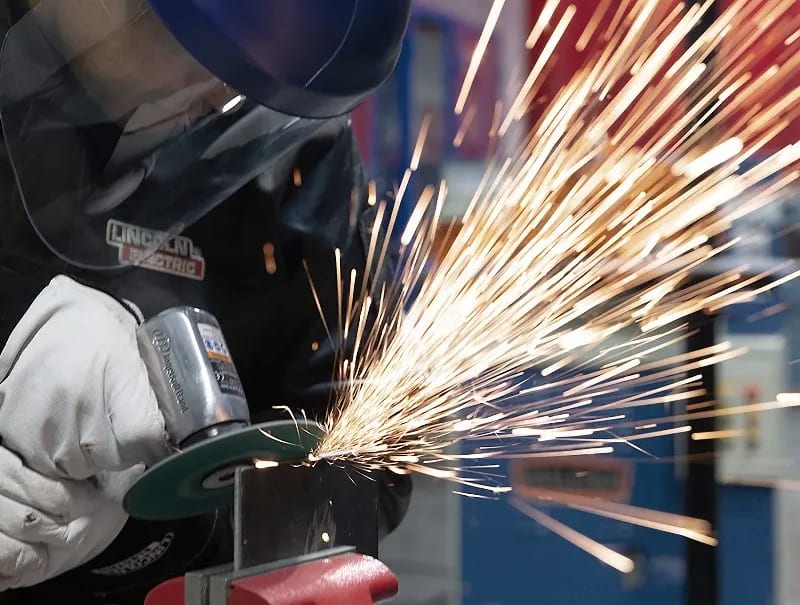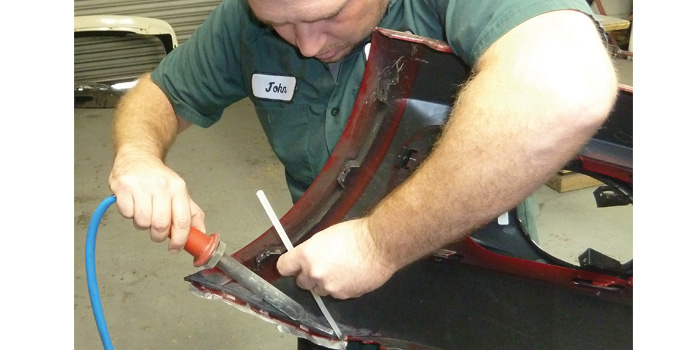Usual Welding Fixing Issues and Just How to Address Them Properly
Welding fixings frequently encounter an array of problems that can threaten the honesty of the end product. Typical problems include poor penetration, porosity, and misalignment, to name a few. Each problem presents unique obstacles that need particular strategies for resolution. Comprehending these problems is important for welders aiming to improve their abilities and results. This conversation will certainly discover these common welding repair work issues and reliable methods to resolve them.
Poor Infiltration
Inadequate penetration takes place when the weld steel fails to totally fuse with the base product, leading to weak joints and possible architectural failings. This issue commonly comes from not enough warm input, inaccurate electrode angle, or improper welding speed. Welders may encounter insufficient penetration as a result of a mistake of the required parameters for a certain material thickness or kind. Furthermore, contamination on the base product's surface can hinder reliable bonding, exacerbating the issue. To resolve insufficient penetration, welders must assure proper setups on their tools and keep a tidy job surface. Regular examination of welds is suggested to recognize any type of shortages early, enabling timely modifications and the prevention of endangered structural integrity in bonded assemblies.
Porosity
Porosity is a typical problem in bonded joints that manifests as small gas bubbles entraped within the weld metal. This flaw can endanger the integrity of the weld, bring about decreased toughness and possible failing under anxiety. Belgrade Fabrication. Porosity normally arises from contamination, dampness, or improper welding techniques, which enable gases to run away right into the liquified weld pool. To deal with porosity, welders need to ensure correct surface preparation, preserve a clean working environment, and use ideal welding parameters. In addition, choosing the best filler product and securing gas can minimize gas entrapment. Regular evaluation and screening of welds can help identify porosity early, guaranteeing prompt corrective activities are taken, therefore protecting the high quality and reliability of the bonded framework
Misalignment
Misalignment in welding can develop from various aspects, including incorrect setup and thermal expansion. Understanding the source is important for efficient resolution. A number of adjustment techniques are offered to straighten elements and ensure structural integrity.
Root causes of Misalignment
Welding imbalance frequently comes from a selection of underlying issues that can compromise architectural honesty. One primary cause is incorrect fit-up of elements prior to welding, which can bring about spaces and unequal surface areas. Variations in thermal growth during the welding procedure can additionally result in distortion, specifically if the products being signed up with have various coefficients of development. Additionally, inadequate fixturing and clamping may fail to hold parts safely in position, bring about movement during welding. Badly conserved tools, including welding machines and devices, might present variances in the weld bead, further adding to imbalance. Ultimately, operator mistake, originating from inadequate training or experience, can additionally play a significant function in developing misaligned welds.
Modification Strategies Offered
Addressing misalignment successfully requires a mix of rehabilitative strategies tailored to the particular issues handy. One usual method is the use of jigs or fixtures to hold elements in the proper position during welding, making sure regular placement. Additionally, preheating the products can help in reducing distortion and boost fit-up. For considerable misalignment, mechanical adjustment strategies, such as using hydraulic jacks or clamps, can be employed to correct the setting prior to welding. Post-weld warm therapy may also be essential to alleviate tensions triggered by imbalance. Finally, careful assessment and adjustment during the arrangement stage can stop misalignment problems from ending up being considerable troubles, advertising a smoother welding process and improving general structural integrity.
Distortion
Distortion is an usual challenge in welding that can occur from different factors, consisting of unequal cooling and heating. Understanding the reasons for distortion is necessary for applying effective avoidance methods. Resolving this issue not just enhances structural integrity but additionally enhances the total high quality of the weld.
Causes of Distortion
When based on the extreme warmth of welding, products commonly undergo changes that can lead to distortion. This sensation mostly emerges from thermal development and contraction throughout the welding procedure. As the weld area warms up, the product broadens; upon cooling, it acquires, which can develop inner tensions. Furthermore, uneven heating across a workpiece can exacerbate these stress and anxieties, causing bending or bending. The kind of product additionally plays a considerable role; steels with varying thermal conductivity and coefficients of expansion may react in a different way, causing unpredictable distortions. Moreover, poor joint design and insufficient fixturing can contribute to misalignment during welding, increasing the possibility of distortion. Comprehending these causes is crucial for reliable welding repair and avoidance strategies.
Avoidance Techniques
Reliable prevention methods for distortion during welding concentrate on regulating warm input and making certain proper joint layout. Keeping a consistent warmth input helps to minimize thermal growth and contraction, which can cause distortion. Making use of techniques such as preheating the work surface can also reduce the temperature gradient, advertising consistent heating. Furthermore, selecting proper joint designs, such as T-joints or lap joints, can enhance stability and minimize anxiety concentrations. Applying appropriate fixturing to protect the workpieces in position even click here more aids in maintaining positioning throughout the welding procedure. Lastly, staggered welding sequences can disperse warm much more uniformly, stopping localized distortion. By using these strategies, welders can substantially decrease the possibility of distortion and boost the total top quality of their welds.
Breaking
Cracking is an usual concern run into in welding repair services, usually resulting from numerous variables such as improper air conditioning rates, product option, or inadequate joint prep work. The incident of cracks can substantially jeopardize the honesty of the weld, resulting in potential failings throughout operation. To resolve this issue, welders need to initially assess the origin, ensuring that products are suitable and appropriately selected for the certain application. In addition, controlling the air conditioning price during the welding procedure is necessary; fast air conditioning can generate stress and bring about breaking. Correct joint layout and prep work additionally add to reducing the danger. Implementing these approaches can boost weld top quality and toughness, ultimately lowering the probability of breaking in completed weldments.

Incomplete Combination
A substantial problem in welding repairs is incomplete fusion, which takes place when the weld steel does not effectively bond with the base material or previous weld passes - Montana Mobile Welding and Repair. This flaw can cause weak points in the joint, possibly endangering the stability of the welded framework. Factors contributing to incomplete fusion include insufficient heat input, incorrect welding strategy, and contamination of the surfaces being joined. To address this issue properly, welders must ensure proper pre-weld cleaning and surface preparation, along with adjust their welding parameters to achieve appropriate infiltration and blend. Normal inspection during the welding process can likewise aid recognize insufficient blend early, enabling prompt restorative actions to boost the overall high quality of the weld
Overheating
While welding fixings can improve structural stability, overheating provides a substantial challenge that can result in product destruction. Excessive warm throughout welding can alter the mechanical residential properties of metals, resulting in minimized toughness, boosted brittleness, and bending. This sensation is specifically critical in high-stress applications where architectural integrity is paramount. Recognizing overheating can include aesthetic inspections for staining or distortion, in addition to monitoring temperature level during the welding process. To reduce the risks linked with overheating, welders ought to utilize suitable strategies, such as regulating heat input, adjusting traveling speed, and utilizing ideal filler products. Additionally, applying pre- and post-weld warmth treatments can aid restore product residential properties and boost the overall high quality of the repair service, ensuring long-term efficiency and security.
Regularly Asked Concerns
What Are the Common Indicators of a Welding Defect?

How Can I Test My Welds for Top quality?
To test welds for top quality, one can make use of visual examinations, ultrasonic testing, and radiographic techniques. Each strategy assures structural integrity, recognizes problems, and validates adherence to specified standards, inevitably boosting the dependability of the bonded joints.
What Security Preventative Measures Should I Take While Welding?
When welding, one should prioritize security by putting on proper individual protective devices, guaranteeing appropriate ventilation, securing flammable products away, keeping a tidy work area, and understanding environments to stop injuries and crashes.
Can I Repair a Weld Without Redesigning the Entire Joint?
Repairing a weld without redesigning the whole joint is possible, depending on the damages (Montana Mobile Welding and Repair Welding). Techniques such as grinding, including filler product, or utilizing a welding process can efficiently resolve details problems while protecting the surrounding framework
What Tools Are Essential for Reliable Welding Repairs?
Essential devices for efficient welding repair services include a welding equipment, cable brush, grinder, safety equipment, clamps, and filler materials. Each device plays an important duty in guaranteeing quality and safety throughout the repair procedure. Porosity usually emerges from contamination, wetness, or inappropriate welding strategies, which allow gases to escape right into the molten weld pool. Badly conserved tools, including welding makers and tools, may introduce inconsistencies in the weld grain, further adding to imbalance. When subjected to the intense warmth of welding, materials typically undergo modifications that can lead to distortion. Fracturing is an usual problem come across in welding repair work, frequently resulting from numerous aspects such as incorrect air conditioning prices, material choice, or poor joint preparation. A considerable problem in welding repair work is insufficient fusion, which occurs when the weld steel does not appropriately bond with the base material or previous weld passes.